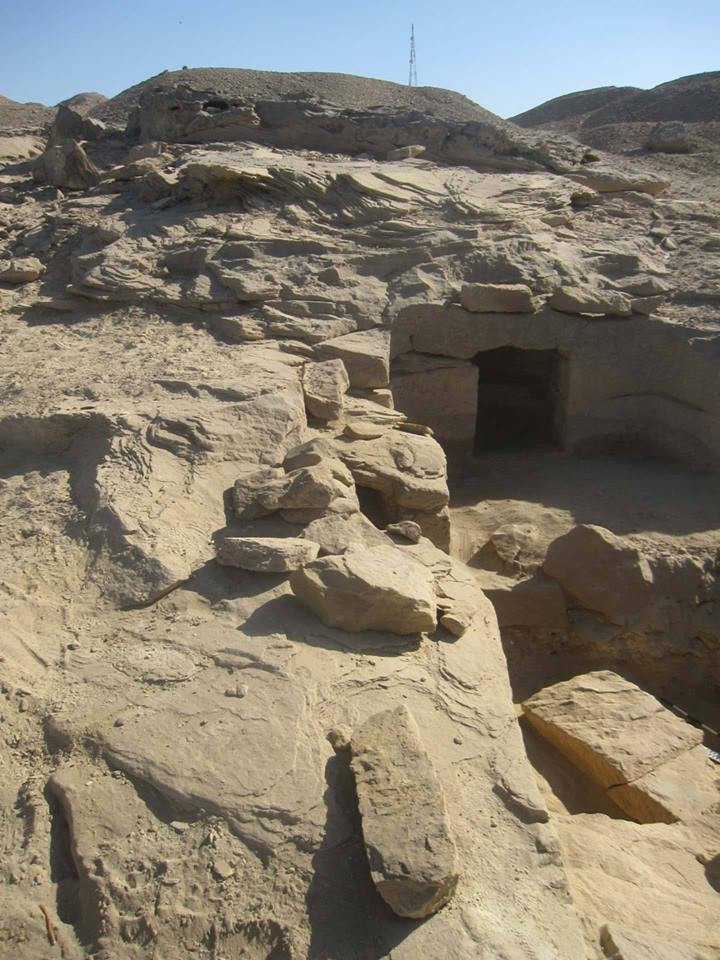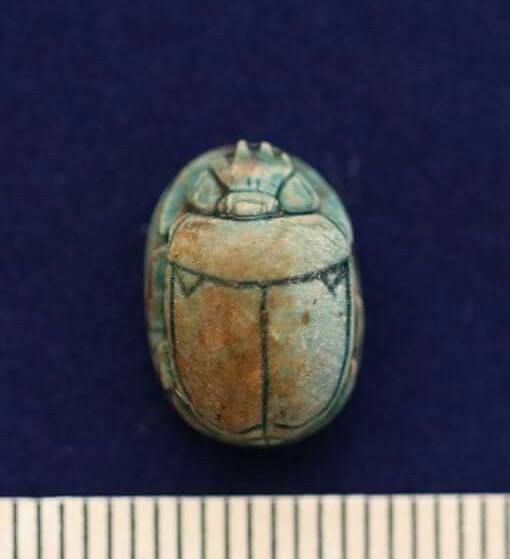Ancient Egyptian crypts containing babies and a crocodile discovered at Gebel el Silsila
Archaeologists uncover tombs and crypts dating to the reigns of Pharaohs Thutmose III and Amenhotep II.
Three ancient Egyptian crypts containing infants, animal burials and burial gifts have been discovered in Gebel el Silsila, a site 65km north of Aswan. Archaeologists from Lund University also found 12 rock cut tombs and chambers containing complete families.
The excavation site dates to the reigns of Pharaohs Thutmose III and Amenhotep II – around 3,600 years ago. Gebel el Silsila was used as a major quarry site from the 18th Dynasty, with almost all of the great temples getting their sandstone from here. Excavations of the site are helping archaeologists to understand the overall function and role of the area in the New Kingdom.
At the site, a team led by Maria Nilsson and John Ward uncovered 12 rock cut tombs along with three crypts cut into the rock. Two are believed to have been used for offerings, while the other was found to contain three individual infant burials and a host of animals.
"Fossils of sheep and goats as well as a couple of Nile perch and an almost complete crocodile were found along with sandstone sarcophagi, sculptured and occasionally painted pottery coffins, painted cartonnage, textile and organic wrapping, ceramic vessels and plates, as well as an array of jewellery, amulets and scarabs," a statement from Egypt's Antiquities Authority said.
Inside the tombs, the archaeologists found multiple burials within the same chambers, potentially being complete families. Remains discovered varied in age and sex, "clearly indicating family life at Silsila".


Three different styles of burial were documented in total. Along with a crypt cut into the rock, they found a shallow grave covered in stone and an infant wrapped in textile and placed in a wooden coffin.
"Two of the three children were placed secreted within the overhangs of the natural sandstone bluffs," the ministry said. "They were placed on their side oriented in either a north-south direction, face towards the east, alternatively east-west direction, and facing north. Burial gifts include amulets (including the figure of Bes), necklaces, ceramic vessels, worked flint and coloured pebbles."
The vast number of remains discovered indicates that people living in Gebel el Silsila at the time were generally healthy. There was no evidence of malnutrition or infection, although elongated bones and muscle attachments indicate an extremely labour intensive environment. "Furthermore, many of the injuries appear to be in an advanced stage of healing, suggesting effective medical care."
Researchers say the find adds a wealth of information about life in Gebel el Silsila, with further excavations expected to reveal even more about the area and the lives of those who lived there thousands of years ago.
Long-lost ancient Egyptian city dating back 7,000 years discovered near Abydos
Ancient Egypt: 8 million mummified puppies and dogs discovered by god of death temple
Pyramids of Egypt reveal new secrets after extensive scanning mission
© Copyright IBTimes 2025. All rights reserved.






















